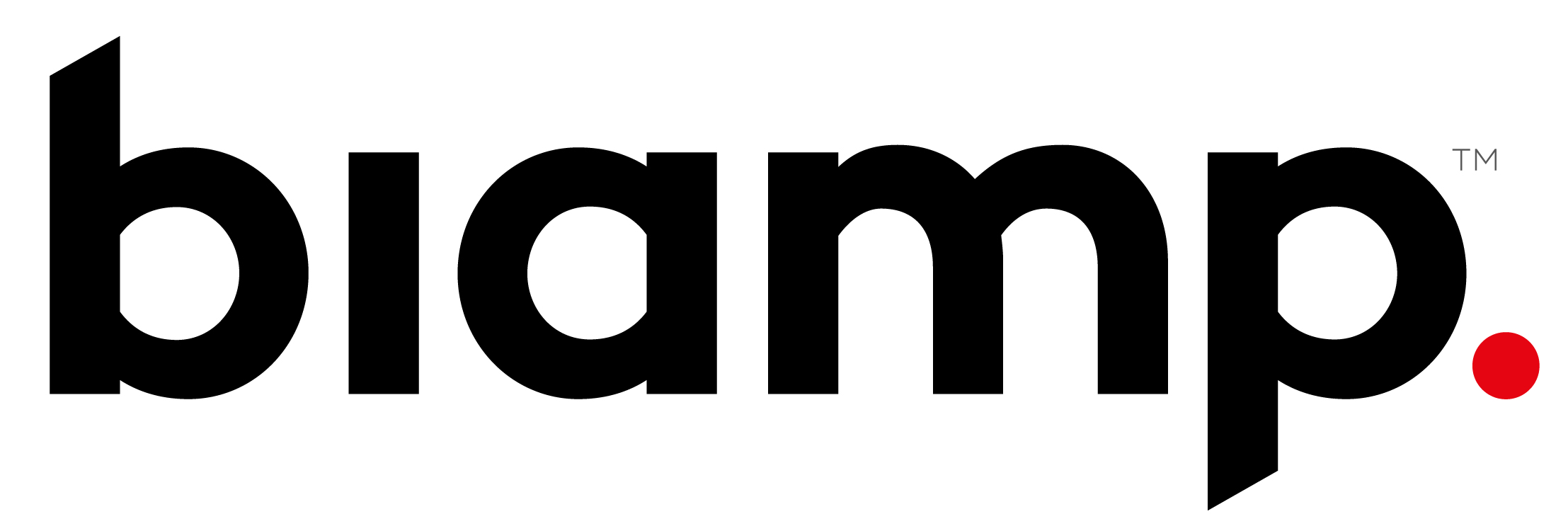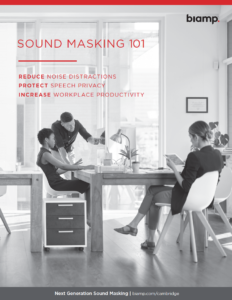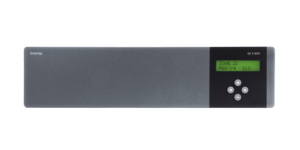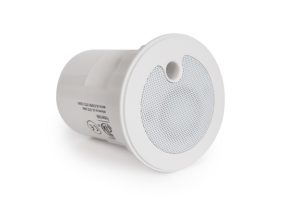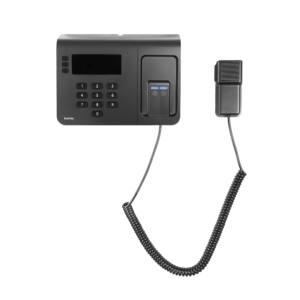Sometimes I am blown away with what I don’t know. That’s not to imply I think I know everything. Instead, I’ve been in the audio business a while and I’ve seen pretty much everything. Recently I discovered a new dimension of the audio biz – a solid and growing commercial audio niche known as Sound Masking. It’s been around for over 50 years, and recently I’ve joined one of the industry-leading companies, Cambridge Sound Management. Our product plays a special kind of noise in office environments ON PURPOSE – which for an audio guy like me first sounded, frankly, bizarre.
In my years at Boston Acoustics I encountered some weird ideas, sometimes in the form of business proposals from potential partners. One wanted us to make audio systems for arcade video games. Sure, arcades are a business, but growing? Another inquiry came from some third-world air force, wanting “2-inch subwoofers” for their helicopters. OK, maybe that last one was my friends at Klipsch goofing on me. And I remember the day one of the tool companies (Milwaukee?) called and asked about making a boom box for work sites. I wished I’d jumped on that one – job site boom boxes turned into a whole category.
No helicopter subwoofer
Anyway, Sound Masking is no helicopter subwoofer. Sound Masking is the practice of deliberately inserting a carefully sculpted spectrum of noise to mask speech and increase privacy in a modern office building. The result is quietness — counter-intuitively — because small sounds and particularly speech at a distance are obscured. If you imagine classic public library (ssssshhhh!) anytime someone speaks, it’s a huge distraction. By deliberately bringing the ambient noise level up, we mask conversations, reducing distraction. Targeted at speech in particular (as opposed to random animal noise or amusement park noise), sound masking greatly  improves the livability of the modern open office — whether cubicles or collaborative work areas. In addition, the system improves privacy for confidential conversations in offices. (Wouldn’t you like to NOT have to listen to that noisy person next door!)
improves the livability of the modern open office — whether cubicles or collaborative work areas. In addition, the system improves privacy for confidential conversations in offices. (Wouldn’t you like to NOT have to listen to that noisy person next door!)
There are a number of systems on the market, and all share the basic concept of playing a constant low-level “pleasant” noise. It’s not pink noise, and it’s certainly not white noise, which is very brash. It is a carefully tuned spectrum of sound, like gentle HVAC sound — soothing. The company I recently joined (see www.cambridgesound.com) has the simplest, most cost effective, easiest to set up system — the only one based on predictable direct-field speakers — tiny ceiling speakers placed every 10 feet or so in an office drop ceiling or open ceiling. Our customers range from small doctor’s offices to massive corporations with multi-building campuses.
Valuable to your business
I share all this not so much as an advertisement, but more to pass along a dimension of the audio industry you may not know about. If you are an installer or integrator, maybe this is a service you should add to your offerings for commercial clients. If you run a company or office and want to improve worker happiness and efficiency, you should consider this, probably above Foosball tables and free donuts. Email us if you want to learn more!
Stephen Shenefield is a veteran consumer electronics and audio product designer; he is Senior Director of Product Development at Cambridge Sound Management. You can read more of Stephen’s own blog postings about product design at www.vaetr.com.
